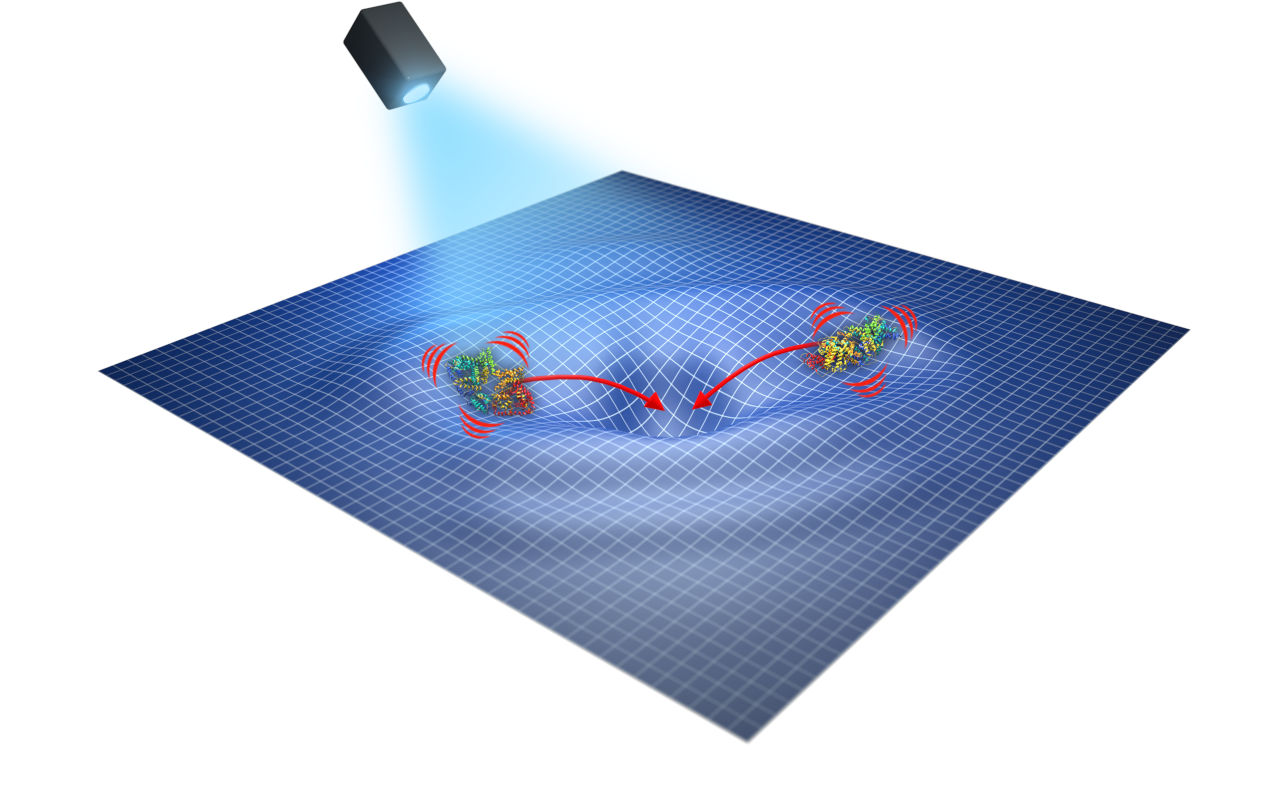Intracellular protein interactions soon explained
How do proteins interact at the heart of cells? This thorny question could be answered thanks to the work of an international consortium led by Jérémie Torrès, Professor at the Institut d'Électronique et des Systèmes (IES) at the University of Montpellier. Winner of the prestigious European FET-Open call for projects, this project is based on the development of a biosensor enabling these interactions to be measured directly inside living cells.

Pour un public averti, cette question ne date pas d’hier. Prédites dès le début du XXème siècle par l’électrodynamique classique et quantique, les forces intermoléculaires agissant à longue distance (<1000 angströms) n’ont jamais été démontrées expérimentalement. Plus pour longtemps, comme l’explique Jérémie Torrès, enseignant-chercheur à l’Institut d’Électronique et des Systèmes (IES) : « Nous avons trouvé un système d’étude qui permet de démontrer ces interactions entre molécules, qui se trouvent être des protéines. »
The " we" used by Jérémie Torres refers to a consortium of four French laboratories under the aegis of the CNRS, including two from Montpellier (IES and the Charles Coulomb Laboratory(L2C)), one from Germany, one from Sweden and two companies: Montpellier start-up TeraKalis and Micronit, based in the Netherlands. Under the impetus of the Montpellier researcher and his L2C colleague Sandra Ruffenach, the project was submitted to the prestigious European FET-Open call for research and innovation initiatives (RIA)... and was selected with the highest score!
Chance or design?
It all starts with one observation: when proteins move in the cytoplasm, they collide and are involved in a very high number of biomolecular reactions in a very short space of time. "It' s a bit like when you start a game of billiards by breaking, and the balls go off in all directions at random," explains Jérémie Torres. "This is what we call Brownian motion. " While this observation has long been accepted as dogma, it does pose a problem: how can these innumerable reactions be effective if they are guided solely by chance?
This is the problem that Jérémie Torres and his colleagues have tackled. " We're not the first. In the 1960s, English physicist Herbert Fröhlich had already raised it. Biology has already demonstrated how, on short distance scales (less than ten angstroms), forces well known from physics guide these intermolecular interactions. " The electrostatic electrostatic forces of Coulomb van der Waalsetc. explain how proteins, when in close proximity to each other, end up attracting each other and sticking together to set reactions in motion. But what we don't know is why they stick together? Are there mechanisms that allow them to ' call' each other ? " asks the IES researcher.
Spectral signature
Thanks to the 3.1 million euros granted by Europe as part of FET-Open funding, the researchers will be able to work on developing a new technology for measuring these interactions. " We're working on a prototype biosensor that will enable us to measure these interactions using the TeraHertz spectral signature of proteins in aqueous media. We are currently the only company in the world with this know-how.
As each protein's spectral signature is unique, it can be identified non-invasively. To measure it, the researchers will, as it were, force the proteins to synchronize their oscillations, " like metronomes forced to oscillate at the same time", adds Jérémie Torrès. " When proteins oscillate collectively, they resonate at a specific frequency that falls into the TeraHertz range. We're going to measure these resonances to reveal the long-range intermolecular interactions that could be at the origin of the mechanisms governing molecular dynamics inside cells."
Physical science vs. science fiction
While the main thrust of this research project is fundamental and technological: to better understand the mechanisms of attraction between proteins, in the long term it could also lead to major therapeutic innovations. How can this be achieved? By acting on these mechanisms, or even inhibiting them when they are involved in the development of certain pathologies. " The dream would indeed be to establish the role played by a protein in a pathology and to know the frequency at which it resonates; we could then imagine destroying this protein with an electromagnetic wave and thus blocking the whole process of development of the pathology, in a non-destructive approach for the rest of the body. But that's still science fiction ," concludes Jérémy Torres.